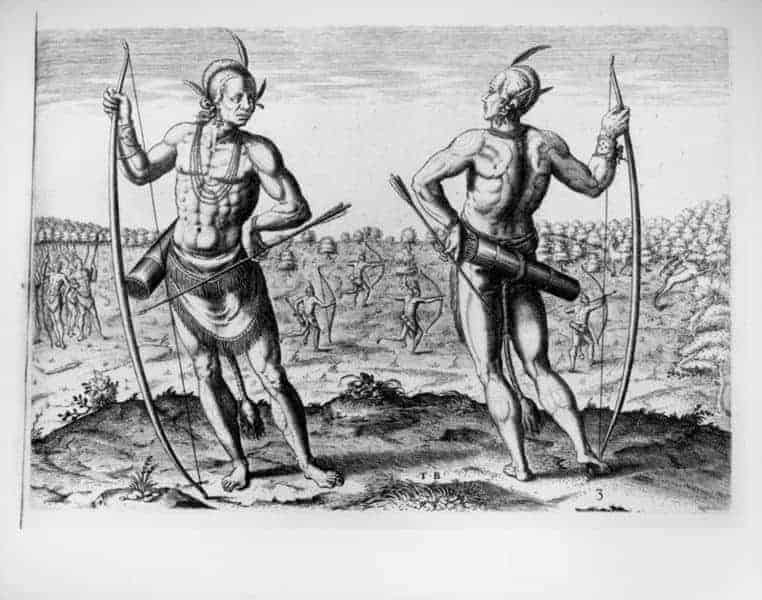From the first landings of the Europeans on the shores of North America through the early twentieth century, relations between the American Indian tribes and the descendants of the European settlers were tenuous. Uneasy peace was broken by war time after time, and though the push westward was one cause, it was not the only one. Those tribes who chose to befriend the arriving Europeans, the French in New France, the English in New England and Virginia, and the Spaniards to the south, found themselves enlisted in the European struggle for empire. They fought the enemies of their friends and often their own ancient enemies as well.
As the Americans pushed westward, the American Indians, though they claimed to have no concept of land ownership, fought to retain what they believed to be their lands. Treaties were made and broken by both sides. Gradually the tribes withdrew across the continent or were assimilated within the settlements of the whites. Both sides committed atrocities against the other. It is a complicated story, made more so by racial hatred, long-standing myth, and often romantic nonsense. For one side it was a war on terror across the frontier, for the other it was a fight to retain a dying way of life.

Here are ten American Indian leaders who fought to prevent the white settlement of the North American continent.

King Philip
Metacomet was a son of the famed Wampanoag leader of The Pilgrim’s Progress fame, Massasoit. As the second of Massasoit’s sons he was not to have inherited the tribal leadership from his father. That honor went to his elder brother, Wamsutta, known to the English settlers as King Alexander. Metacomet became chief on his brother’s death. Metacomet was called King Philip by the English, who gave his name to a war conducted between the English and the Wampanoag. King Philip was well known to the English and vice versa, and as the leader of the Wampanoag King Philip went so far as to dress in English clothing.
King Philip had more to deal with than the continually growing English settlements. To the north and west of the Wampanoag lands, the powerful Iroquois confederation were pushing the more peaceful tribes towards the English settlements in a series of raids, the point of contention being control of the lands which were rich in beaver and other pelts, valuable in trade with the French. In 1671, motivated by the rising strength of the English, King Philip signed a treaty which placed the Wampanoag under English authority and law. He also surrendered most of his tribe’s firearms.
Under English law, in 1675 three Wampanoags were hanged for the murder of one John Sassamon, an Indian who had converted to Christianity. That summer raids by several of the New England tribes against the English settlements began with a vengeance. Several tribes cross New England, including the Mohican and the Pequot, sided with the English. Others, such as the once powerful Narragansett, the Podunk, and others, determined to destroy the English settlements. King Philip and his tribe were with the latter. By the time what became King Philip’s War broke out there were over 80,000 English settlers throughout New England.
In late 1675 King Philip attempted to obtain an alliance with the Mohawk, despite the long-standing enmity between the Mohawk and the Algonquian tribes, of which the Wampanoag were one. Instead the Mohawk attacked the Wampanoag, so crippling King Philip’s band that they withdrew to the Massachusetts swamps. Throughout 1676 the Indians raided the English settlements as the colonists and their allies continued to organize military actions which would eliminate the threat.
King Philip was killed, ironically by a converted Christian Indian rather than an Englishman, in July 1676, after most of his followers had surrendered to the English, and the colonists were using rangers to locate the ringleaders of the rebellion. He was treated as a criminal under English law, rather than as a warrior, and his corpse was beheaded, drawn, and quartered. In southern New England there followed a period of relative peace, while in Maine and New Hampshire, periodic violence continued for more than seventy years, with annual raids of frontier settlements and six named wars or conflicts between English and Indians.

